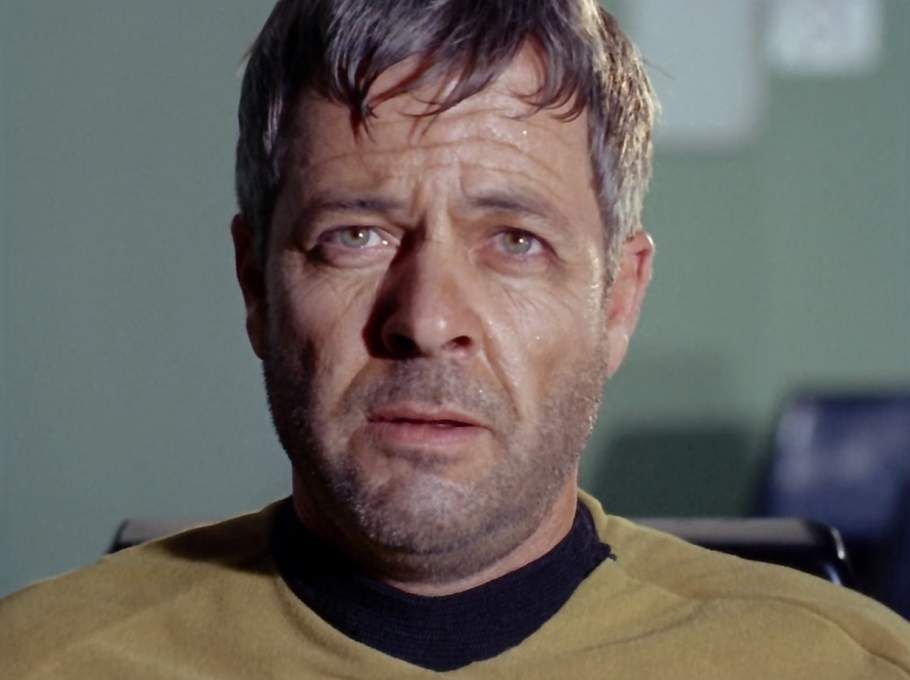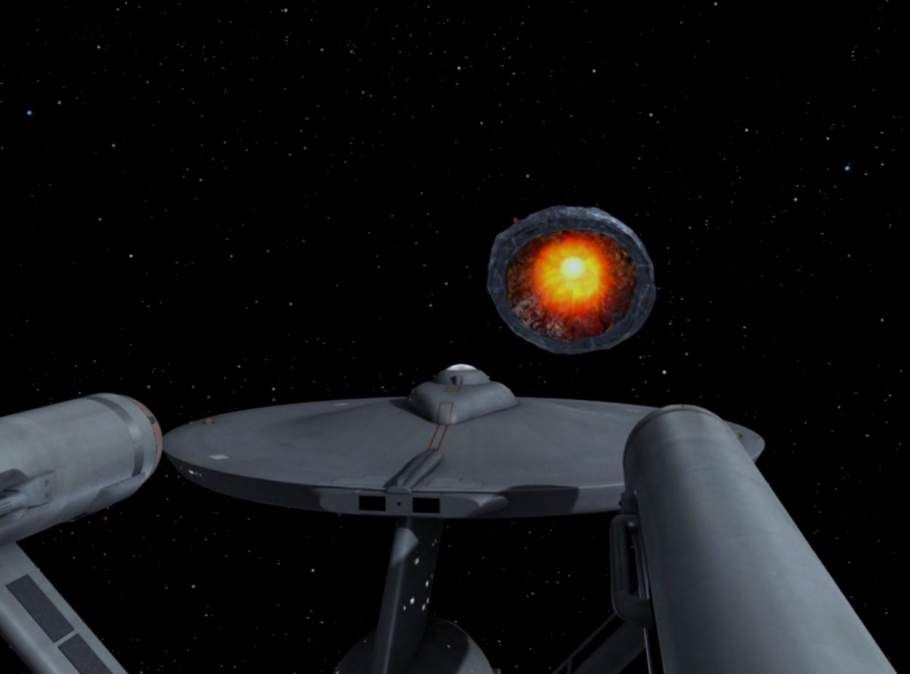My Favorite Classic Star Trek Episode
Archivist Mark Kahn became enamored of Star Trek back in the early 1970s, when it went into syndication after completing its three-year run on NBC in 1969. Many fans agree that the 1967-68 season produced some of the best episodes of the series, yet contrary to the opinion of most, he believes The Doomsday Machine is the best of them all.
:focal(500x375:501x376)/https://tf-cmsv2-smithsonianmag-media.s3.amazonaws.com/blogging/featured/entdm.jpg)
The COVID-19 pandemic has forced most of us to hunker down at home. Some particularly stir-crazy people have coped with this by watching a lot more TV. I am one such person. One program I’ve been returning to, on one of those old-timey stations, is Star Trek: The Original Series (TOS). Being 57 years old, I became enamored of Star Trek back in the early 1970s, when it went into syndication after completing its three-year run on NBC in 1969. Off and on for the last half-century, I’ve watched this show wherever I’ve been and have seen each episode numerous times. The one episode that stands out above all others is The Doomsday Machine that originally aired on TV in 1967 during the program’s second season. Many TOS fans agree that the 1967-68 season produced some of the best episodes of the series. Contrary to the opinion of most dedicated TOS fans, however, I believe The Doomsday Machine is the best of them all.
How can I possibly justify such a viewpoint? First, a brief description of Doomsday Machine. As this story opens, the starship Enterprise encounters a solar system devoid of most of its planets, as well as another Starfleet starship, Constellation. This vessel is wrecked, drifting in space, carrying only one survivor of the crew complement: Commodore Matt Decker. Several Enterprise crew members, including Captain James T. Kirk and chief engineer Montgomery “Scotty” Scott, beam aboard the derelict Constellation to search for survivors and take the vessel in tow. Decker tells Kirk that a robot planet-killer of immense size, power, and unknown origin attacked his ship, killed his crew (he had transported them to a planet that the planet-killer destroyed), and left him stranded in space. Decker, still in a state of shock, is transported back to the Enterprise, where he seizes command of Enterprise from first officer Spock. He orders the ship to attack this killing machine from “straight out of hell”—and fails as he had with Constellation. Meanwhile, Kirk and Scott manage to get Decker’s vessel moving and save Enterprise from imminent destruction. Subsequently, Decker is relieved from duty, steals a shuttlecraft, and pilots it directly into the maw of the planet-killer. With slight damage from Decker’s actions detected by Spock, Kirk takes the “calculated risk” of steering the battered hulk of Constellation directly inside this doomsday machine and detonating the vessel’s impulse engines. Kirk’s gamble pays off with the usual last-minute Trekian dramatics, destroying the galactic menace once and for all.
My reasons for Doomsday Machine as TOS’s best episode (in no particular order):
- The Doomsday Machine itself. As a kid, I thought this cone-shaped planet-killer was frightening. Even now, it still looks intimidating. Besides its tremendous size (it’s “miles long,” as Decker declares), this robot has a huge aperture that can swallow large chunks of planetary bodies, as well as starships. Also, deep inside its internal workings is a fiery, bright interior: A hellish sight to behold!

- Commodore Decker, as played by William Windom. This is a tour-de-force performance by a massively talented actor. He plays Decker with true finesse. Upon losing his crew and command, the Commodore’s emotions run the gamut from shock and fear to anger and resoluteness. Mr. Windom captures the essence of a proud Starfleet officer, even when maddened with grief. Decker is Captain Ahab in this episode, relentlessly and tragically pursuing this 23rd-century vision of Moby Dick.

- Quintessential Captain Kirk. The Doomsday Machine represents James T. Kirk at his very best. He is calm, cool, and collected throughout the ordeal of combating this terrible threat to the galaxy. In his dealings with Decker, Kirk is marvelously multifaceted, displaying compassion, frustration, and anger. This last emotion is evident when the Captain, still stranded on the crippled Constellation, finally learns that the Commodore has taken command of his vessel. His fury at this seizure forces Decker to relinquish control back to Spock, thus saving Enterprise from being ingested by the planet-killer. The final act of the episode, in which he destroys the machine, is just as Kirk-ian, albeit in a calmer sense. As Kirk steers Constellation into the maw of the doomsday machine, he waits patiently for Enterprise’s damaged transporter to beam him up. Of course, Kirk survives, and his scheme is successful. But his utterly unruffled (even slightly sardonic) demeanor as he does so is the purest distillation of the iconic character. Undoubtedly, this is among William Shatner’s finest moments in portraying one of science fiction’s greatest characters.

- The special effects. This episode is chock-full of action, principally between the two starships in question and the doomsday machine. If you enjoy phaser fire, proton beams and a colorful explosion of the inner workings of the planet-killer, The Doomsday Machine is the TOS episode for you.

- Miscellany. The Doomsday Machine contains a fascinating assemblage of rare TOS occurrences. First off, two red-shirted security officers are posted on Enterprise’s bridge Commodore Decker’s brief (but eventful) stay aboard the ship. There is also the appearance of Lieutenant Palmer on Enterprise. Palmer is the communications officer on duty for this episode, portrayed by actress Elizabeth Rogers. Ordinarily, of course, this role was filled by Nichelle Nichols who plays Lieutenant Uhura on most TOS episodes. However, due to a singing engagement in New York, Nichols was unavailable to perform in The Doomsday Machine—thus, Rogers’ appearance as an Enterprise bridge officer. She would go on to portray Palmer one more time during TOS’ run on TV, in season three’s The Road to Eden. Most amusing of all these tidbits, however, is the fact that viewers can see and hear Scotty swear under his breath as he frantically tries to repair the transporter to save Kirk’s life. It’s not quite as poignant as listening to the Captain close out the episode by pontificating upon 20th-century hydrogen bombs, but it sure is entertaining.

With all of this in mind, I find The Doomsday Machine to be the best TOS episode, and my personal favorite. Now I’ll have to muse upon what I believe to be the worst Star Trek episode—but that will have to be another blog post!
What do you think? Which episode of Star Trek: The Original Series is the best?
Disclaimer: the opinion expressed is that of the writer. It does not represent an endorsement by the Smithsonian’s National Air and Space Museum.
